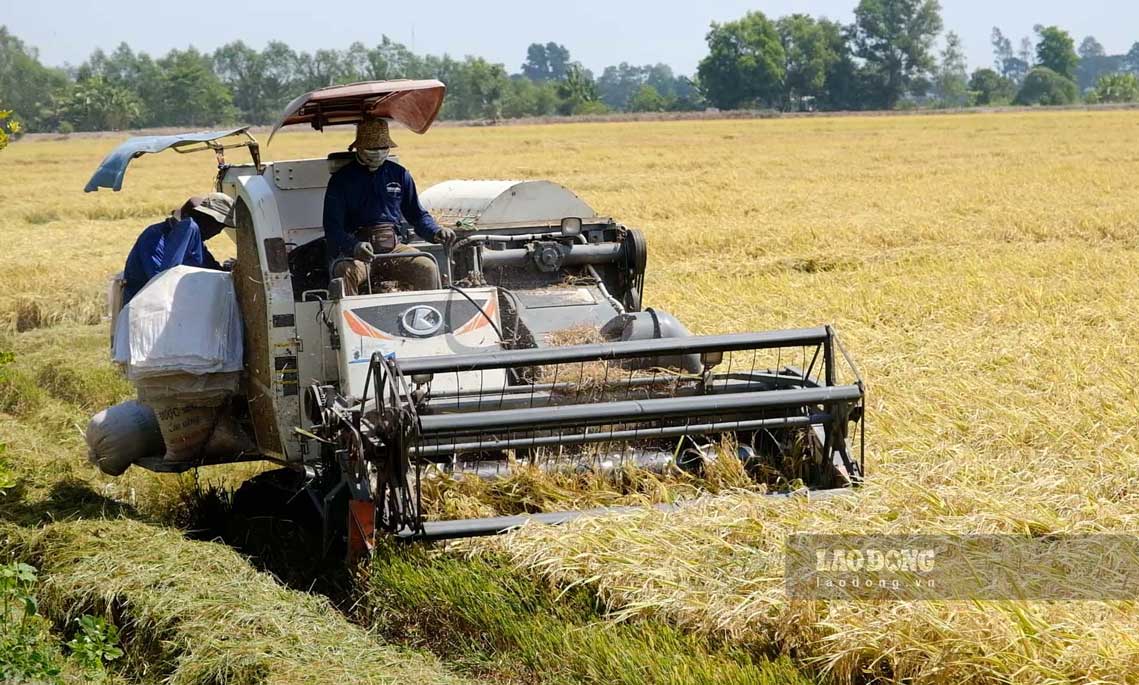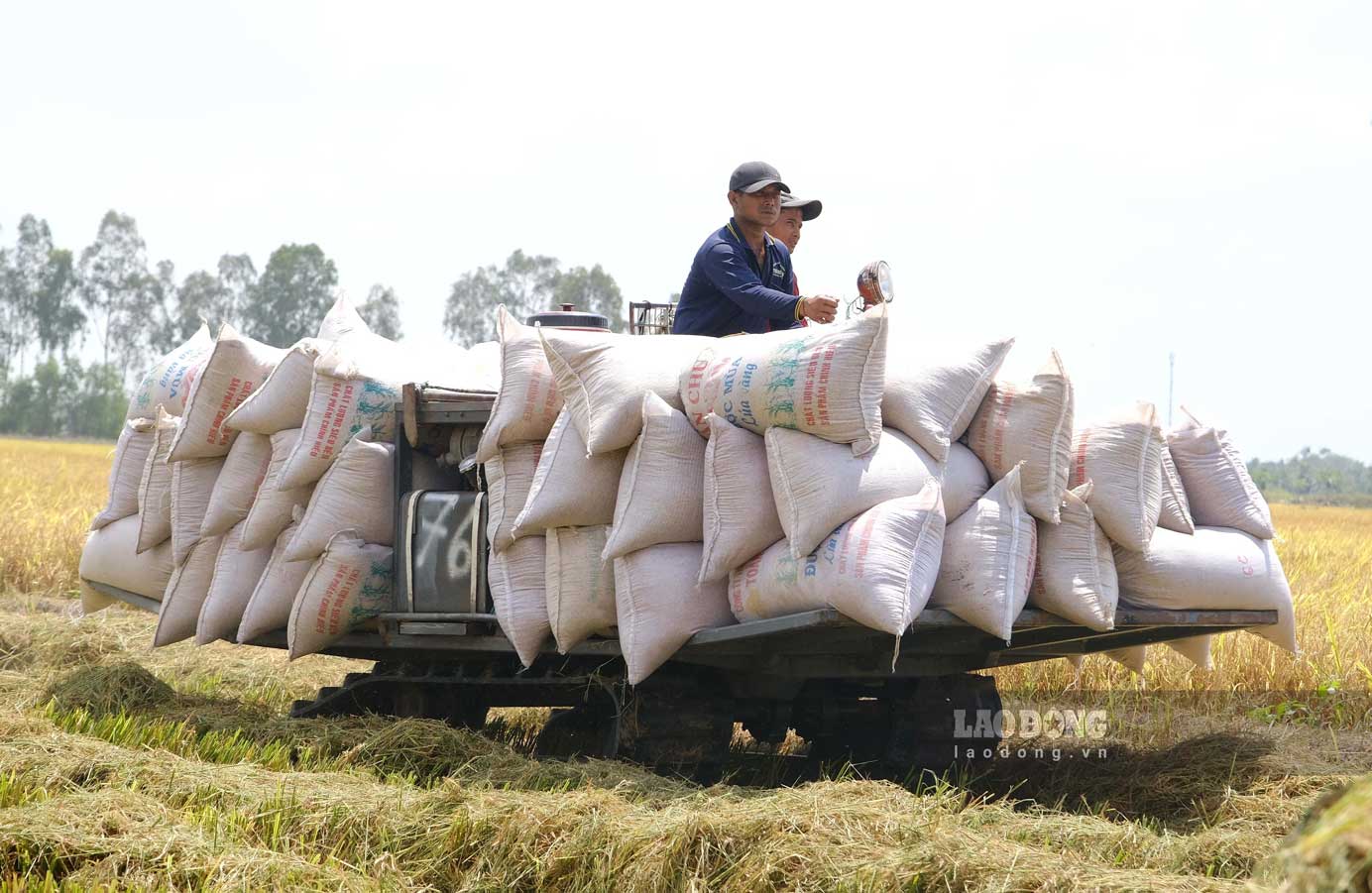Profit decreases according to rice prices
In the 2024 - 2025 winter-spring rice crop, farmers in Can Tho City have planted on an area of over 72,000 hectares, with the main varieties being Jasmine 85, Amorphous grain 8, OM 380, OM 5451, OM 18... By the end of February 2025, the whole city had harvested over 57,000 hectares, with an average yield of nearly 7.5 tons/ha.

According to farmers, this year's winter-spring crop, due to fluctuations in rice prices combined with high production costs, has resulted in a decrease in profits compared to the same period.
Farmer Nguyen Van Tu (Vinh Thanh district, Can Tho city) said that since the Lunar New Year, rice prices have decreased sharply, and agricultural material costs have increased by about 30%, affecting the profits of the whole crop. With a yield of 750 kg/cong (1 cong = 1,000m2), Mr. Tu estimated the profit to reach about 2.5 million VND/cong, lower than the same period.
"If last year, Dai Thom 8 rice was purchased by traders at 7,800 VND/kg, now it is only 6,400 VND/kg. Because rice is ready for harvest and the house has no storage space, I have to sell it at this price. Although the profit is about 1 million VND/cong lower than last year, it is still profitable in general, said Mr. Tu.
Seeding 20 hectares of OM 5451 rice for the winter-spring crop, farmer Tran Van Tuan (Thoi Lai district, Can Tho city) assessed the yield this year at about 700kg/cong, lower than the same period due to unfavorable weather. Along with that, increased production costs caused profits to decrease by about 30%.
"Bad weather, unseasonal rain... cause the appearance of pests and diseases, so stools and pesticides must be increased. If the previous crop was divided by only 500,000 VND/bag, this crop will be up to nearly 650,000 VND/bag. Meanwhile, rice is only purchased by traders at 5,300 VND/kg, down 1,000 VND/kg compared to last year. Thanks to farming on home soil, the profit has decreased but is still nearly 2 million VND/cong. Households renting land for rice will be lower than this level, Mr. Tuan shared.
Reducing costs combined with circular production
As of early March, winter-spring rice in Can Tho City is in the ripening stage of about 21% and harvested at 79%. It is expected that the winter-spring rice will be harvested completely in mid-March. Currently, many farming households after harvesting rice have taken advantage of the time to renovate their fields to sow for the summer-autumn crop.
Accordingly, the 2025 summer-autumn rice sowing season is divided into 2 phases from February 28 to March 6 and the period from March 21 to March 27. To date, farmers have planted over 27,000 hectares of summer rice. Localities have arranged the crop season based on the city's seasonal framework combined with the measure of "Showing to avoid moss, simultaneously, focusing on each region and each field". Farmers are also advised not to sow for long periods, not to leave in the same field with many intercropped rice fields.

To increase income, the Can Tho Agricultural Department recommends that people should take advantage of straw produced in a circular direction instead of burning it to help increase income as well as reduce greenhouse gas emissions. When cultivating the summer-autumn crop, farmers should apply all possible smart farming measures to reduce input production costs, convert crop structure to suit local conditions and soil to avoid damage in areas at risk of lack of water for production.










